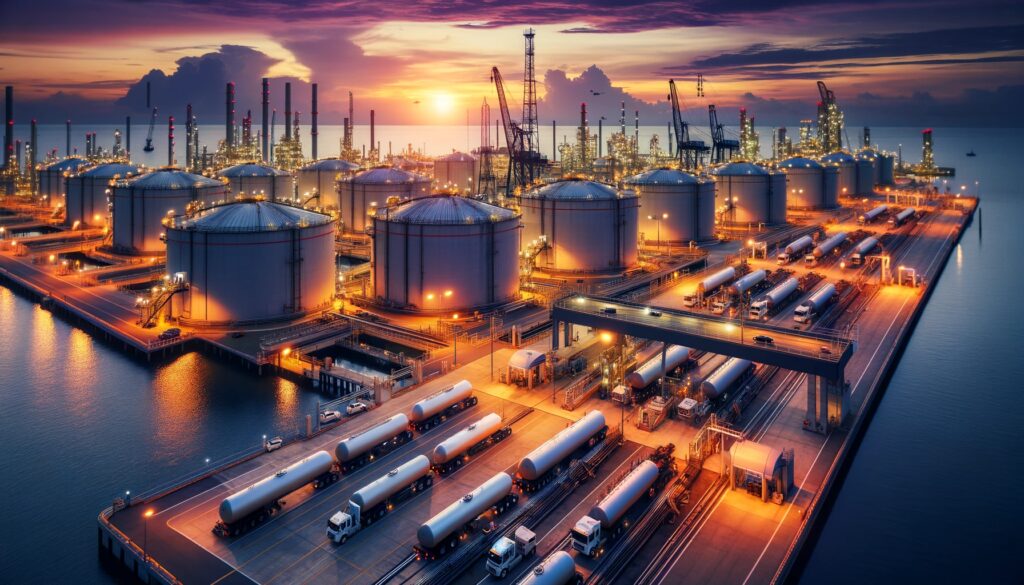When it comes to industrial environments, safety is paramount. In areas where flammable gases, vapors, or combustible dust are present, the risk of explosions and fires is significantly higher. To mitigate these risks and ensure the well-being of personnel and facilities, explosion proof lighting is a crucial requirement. But where exactly is hazardous location lighting necessary? In this article, we’ll explore the various environments and industries where explosion proof lighting is mandated and shed light on the types of light fixtures suitable for these hazardous locations.
Understanding Hazardous Locations
Before we delve into the specific areas that require explosion proof lighting, let’s first understand what constitutes a hazardous location.
Defining Hazardous Locations
A hazardous location is an area where flammable gases, vapors, or combustible dust are present in sufficient quantities to create a risk of explosion or fire. These locations are classified based on the type and concentration of the hazardous substances present. The classification system helps determine the appropriate safety measures and equipment required, including hazardous location lighting. Read more about Understanding the Explosion-Proof Lighting Standard: Ensuring Safety in Hazardous Environments here
Classifications of Hazardous Locations
Hazardous locations are typically classified into three main categories:
- Class I: Locations where flammable gases or vapors are present.
- Class II: Locations where combustible dust is present.
- Class III: Locations where ignitable fibers or flyings are present.
Each class is further divided into divisions based on the probability and duration of the hazardous substance being present. Division 1 indicates that the hazardous substance is present continuously or frequently, while Division 2 indicates that the substance is present only under abnormal conditions.
Industries Requiring Explosion Proof Lighting
Now, let’s explore some of the key industries where hazardous location lighting is essential.
Oil and Gas Industry
The oil and gas industry is one of the most prominent sectors requiring explosion proof lighting. From offshore drilling platforms to refineries and pipeline facilities, the presence of flammable gases and vapors necessitates the use of specialized lighting solutions. Hazardous location lighting is critical in areas such as:
– Drilling rigs and platforms
– Refineries and processing plants
– Storage tanks and loading docks
– Compressor and pump stations
Chemical and Petrochemical Plants
Chemical and petrochemical plants involve the handling and processing of various flammable and combustible substances. Explosion proof lighting is mandatory in areas where these substances are present, including:
– Reaction vessels and mixing tanks
– Distillation columns and fractionators
– Storage and handling areas for chemicals
– Laboratories and testing facilities
 |
Mining and Mineral Processing
In the mining industry, hazardous location lighting is crucial for ensuring the safety of workers and preventing explosions caused by combustible dust or methane gas. Areas requiring explosion proof lighting include:
– Underground mines and tunnels
– Mineral processing plants and refineries
– Coal handling and storage facilities
– Ventilation and exhaust systems
Grain and Food Processing
Grain handling and food processing facilities often deal with combustible dust, such as flour, sugar, and grain dust. Explosion proof lighting is necessary to prevent ignition of these substances in areas like:
– Grain silos and storage bins
– Milling and grinding areas
– Conveying and packaging systems
– Dust collection and filtration units
Types of Explosion Proof Light Fixtures
When selecting light fixtures for hazardous locations, it’s essential to choose products that meet the specific requirements of the environment. Some common types of explosion proof light fixtures include: Read more about How Do You Know if a Light is Explosion-Proof? here.
- Fluorescent Fixtures: Explosion proof fluorescent fixtures are designed with sealed enclosures and special ballasts to prevent ignition of hazardous substances.
- LED Fixtures: Explosion proof LED fixtures offer energy efficiency and long lifespan while providing safe illumination in hazardous areas.
- High Bay Fixtures: Explosion proof high bay fixtures are suitable for illuminating large, high-ceiling spaces in hazardous locations.
- Portable Fixtures: Explosion proof portable fixtures, such as hand lamps and flashlights, are designed for use in hazardous locations where temporary lighting is needed.
Frequently Asked Questions (FAQs)
- How do I determine if my facility requires explosion proof lighting?
Conduct a thorough risk assessment and consult with safety professionals to determine the classification of your facility and the need for hazardous location lighting.
- Can regular light fixtures be used in hazardous locations?
No, regular light fixtures are not designed to prevent the ignition of hazardous substances and should never be used in classified hazardous locations. Read more about Are LED Bulbs Explosion Proof? Understanding Lighting Safety in Hazardous Environments here.
- How often should explosion proof led light fixture fixtures be inspected?
Explosion proof light fixtures should be regularly inspected and maintained according to the manufacturer’s recommendations and industry standards to ensure their continued safe operation.
- Are explosion proof led light fixture fixtures required in all industrial environments?
No, explosion proof led light fixture is specifically required in locations where flammable gases, vapors, or combustible dust are present in sufficient quantities to pose a risk of explosion or fire.
Conclusion
Explosion proof lighting is a critical safety requirement in various industries where hazardous substances are present. From oil and gas facilities to chemical plants and grain processing units, hazardous location lighting plays a vital role in preventing explosions and fires. By understanding the classification of hazardous locations and selecting appropriate types of light fixtures, facilities can ensure a safe and well-illuminated working environment. Remember to regularly inspect and maintain explosion proof lighting to maintain its integrity and effectiveness in mitigating risks. Prioritizing safety through the use of proper hazardous location lighting is essential for protecting personnel, equipment, and the environment in these challenging industrial settings.
Your message has been sent
